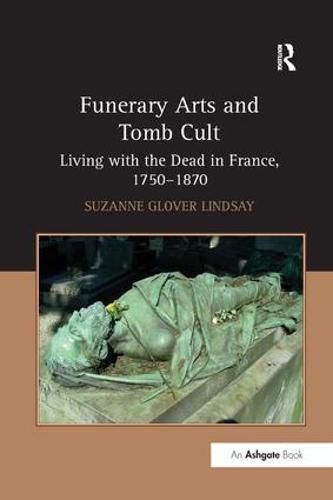Readings Newsletter
Become a Readings Member to make your shopping experience even easier.
Sign in or sign up for free!
You’re not far away from qualifying for FREE standard shipping within Australia
You’ve qualified for FREE standard shipping within Australia
The cart is loading…






Even before the upheaval of the Revolution, France sought a new formal language for a regenerated nation. Nowhere is this clearer than in its tombs, some among its most famous modern sculpture-rarely discussed as funerary projects. Unlike other art-historical studies of tombs, this one frames sculptural examples within the full spectrum of the material funerary arts of the period, along with architecture and landscape. This book further widens the standard scope to shed new and needed light on the interplay of the funerary arts, tomb cult, and the mentalities that shaped them in France, over a period famous for profound and often violent change. Suzanne Glover Lindsay also brings the abundant recent work on the body to the funerary arts and tomb cult for the first time, confronting cultural and aesthetic issues through her examination of a celebrated sculptural type, the recumbent effigy of the deceased in death. Using many unfamiliar period sources, this study reinterprets several famous tombs and funerals and introduces significant enterprises that are little known today to suggest the prominent place held by tomb cult in nineteenth-century France. Images of the tombs complement the text to underline sculpture’s unique formal power in funerary mode.
$9.00 standard shipping within Australia
FREE standard shipping within Australia for orders over $100.00
Express & International shipping calculated at checkout
Even before the upheaval of the Revolution, France sought a new formal language for a regenerated nation. Nowhere is this clearer than in its tombs, some among its most famous modern sculpture-rarely discussed as funerary projects. Unlike other art-historical studies of tombs, this one frames sculptural examples within the full spectrum of the material funerary arts of the period, along with architecture and landscape. This book further widens the standard scope to shed new and needed light on the interplay of the funerary arts, tomb cult, and the mentalities that shaped them in France, over a period famous for profound and often violent change. Suzanne Glover Lindsay also brings the abundant recent work on the body to the funerary arts and tomb cult for the first time, confronting cultural and aesthetic issues through her examination of a celebrated sculptural type, the recumbent effigy of the deceased in death. Using many unfamiliar period sources, this study reinterprets several famous tombs and funerals and introduces significant enterprises that are little known today to suggest the prominent place held by tomb cult in nineteenth-century France. Images of the tombs complement the text to underline sculpture’s unique formal power in funerary mode.